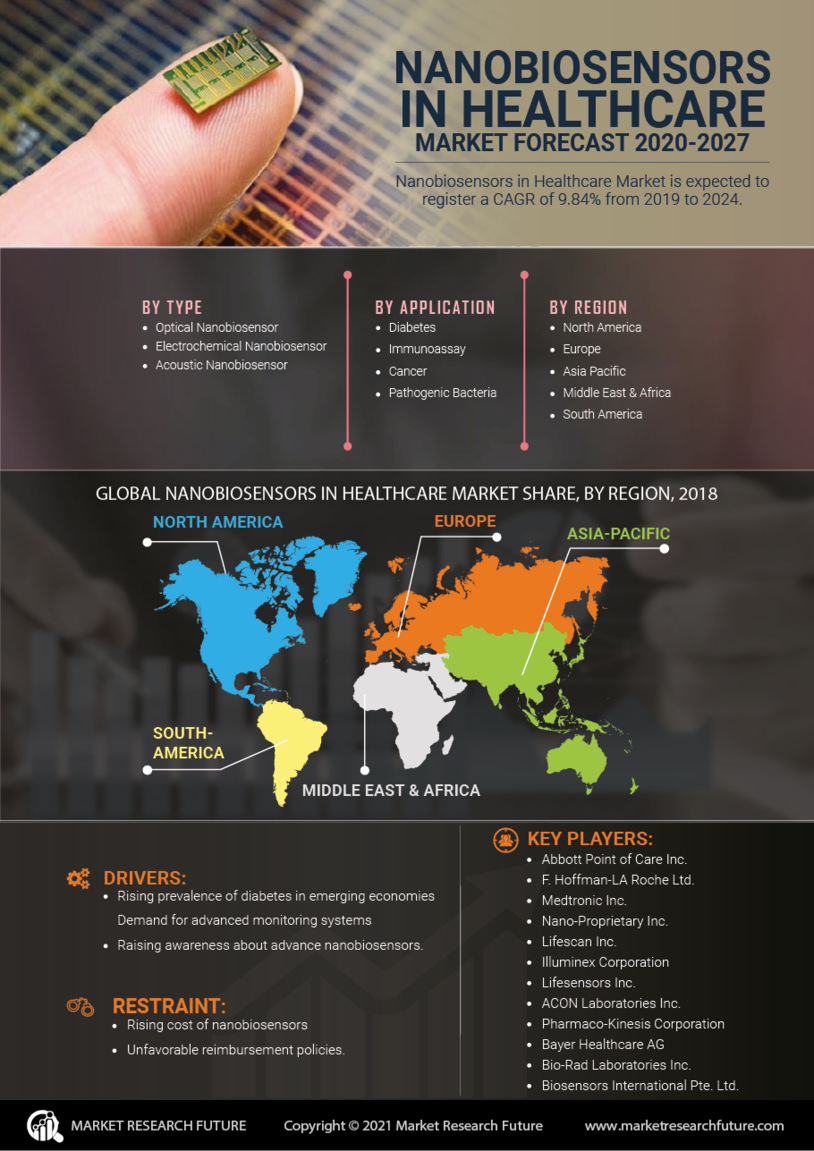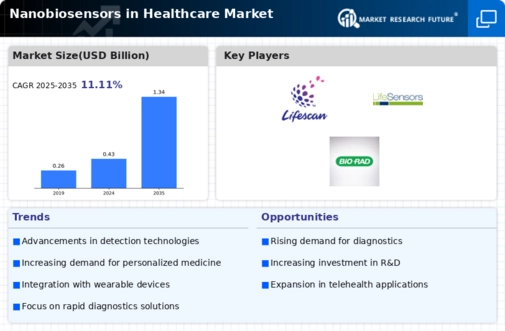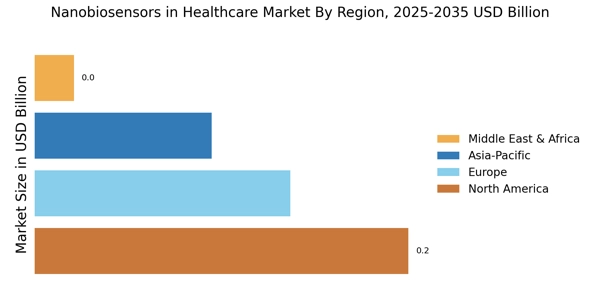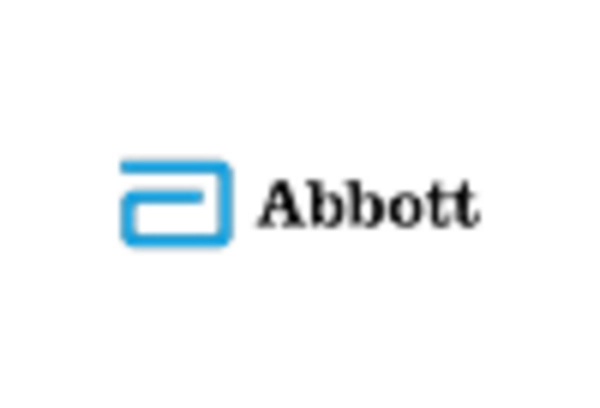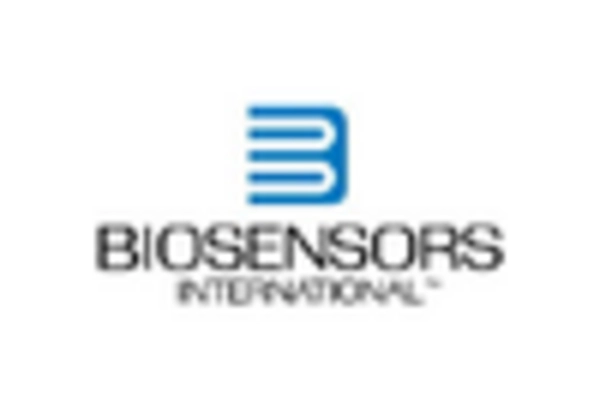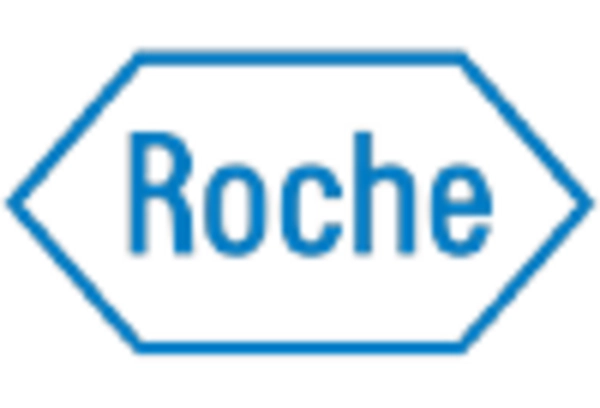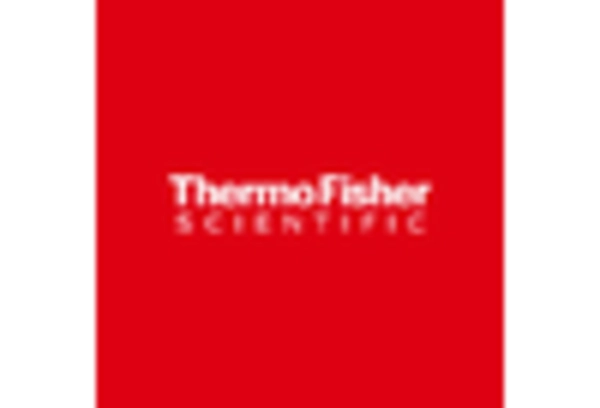Rising Demand for Point-of-Care Testing
The increasing demand for point-of-care testing (POCT) is significantly influencing the Nanobiosensors in Healthcare Market. Patients and healthcare providers are seeking rapid and accurate diagnostic solutions that can be administered outside traditional laboratory settings. Nanobiosensors offer the advantage of providing immediate results, which is particularly beneficial in emergency situations. The market for POCT is projected to grow substantially, with estimates indicating a value of USD 30 billion by 2027. This trend is driven by the need for timely decision-making in patient management, especially in chronic disease monitoring and infectious disease detection. Consequently, the integration of nanobiosensors into POCT devices is likely to enhance their functionality and reliability, thereby propelling market growth.
Growing Awareness of Preventive Healthcare
The growing awareness of preventive healthcare is driving the Nanobiosensors in Healthcare Market. As individuals become more proactive about their health, there is an increasing demand for tools that facilitate early detection of diseases. Nanobiosensors, with their ability to provide rapid and accurate diagnostics, align well with this trend. Public health campaigns and educational initiatives are promoting the importance of regular health monitoring, thereby increasing the adoption of these technologies. The market for preventive healthcare solutions is anticipated to reach USD 50 billion by 2028, with nanobiosensors playing a pivotal role in this transformation. This shift towards preventive measures not only enhances patient outcomes but also reduces healthcare costs, making it a compelling driver for market growth.
Technological Advancements in Nanobiosensors
The Nanobiosensors in Healthcare Market is experiencing rapid growth due to continuous technological advancements. Innovations in nanotechnology have led to the development of highly sensitive and specific biosensors capable of detecting biomarkers at extremely low concentrations. For instance, the integration of nanomaterials such as graphene and gold nanoparticles enhances the performance of these sensors, allowing for real-time monitoring of various health conditions. The market is projected to reach USD 5 billion by 2026, driven by the increasing adoption of these advanced technologies in diagnostics and therapeutic applications. Furthermore, the miniaturization of devices and the incorporation of wireless technology facilitate seamless integration into healthcare systems, thereby improving patient outcomes.
Increased Investment in Healthcare Innovations
Investment in healthcare innovations is a key driver for the Nanobiosensors in Healthcare Market. Venture capital and government funding are increasingly directed towards research and development of nanotechnology-based solutions. This influx of capital supports the exploration of novel applications for nanobiosensors, including personalized medicine and targeted drug delivery systems. As healthcare systems worldwide strive to improve efficiency and patient outcomes, the demand for innovative diagnostic tools is expected to rise. Reports indicate that investment in healthcare technology could exceed USD 200 billion by 2025, with a significant portion allocated to nanobiosensor research. This trend not only fosters technological advancements but also encourages collaboration between academia and industry, further enhancing market potential.
Regulatory Developments Supporting Nanobiosensors
Regulatory developments play a crucial role in shaping the Nanobiosensors in Healthcare Market. Governments and health authorities are increasingly recognizing the potential of nanobiosensors for improving diagnostic accuracy and patient care. Recent initiatives aim to streamline the approval processes for these innovative devices, thereby encouraging research and development. For example, the introduction of guidelines for the evaluation of nanotechnology-based medical devices has fostered a more conducive environment for market entry. This regulatory support is expected to enhance the market's growth trajectory, with estimates suggesting a compound annual growth rate (CAGR) of 15% over the next five years. As a result, manufacturers are more inclined to invest in the development of novel nanobiosensors, further expanding the market.
